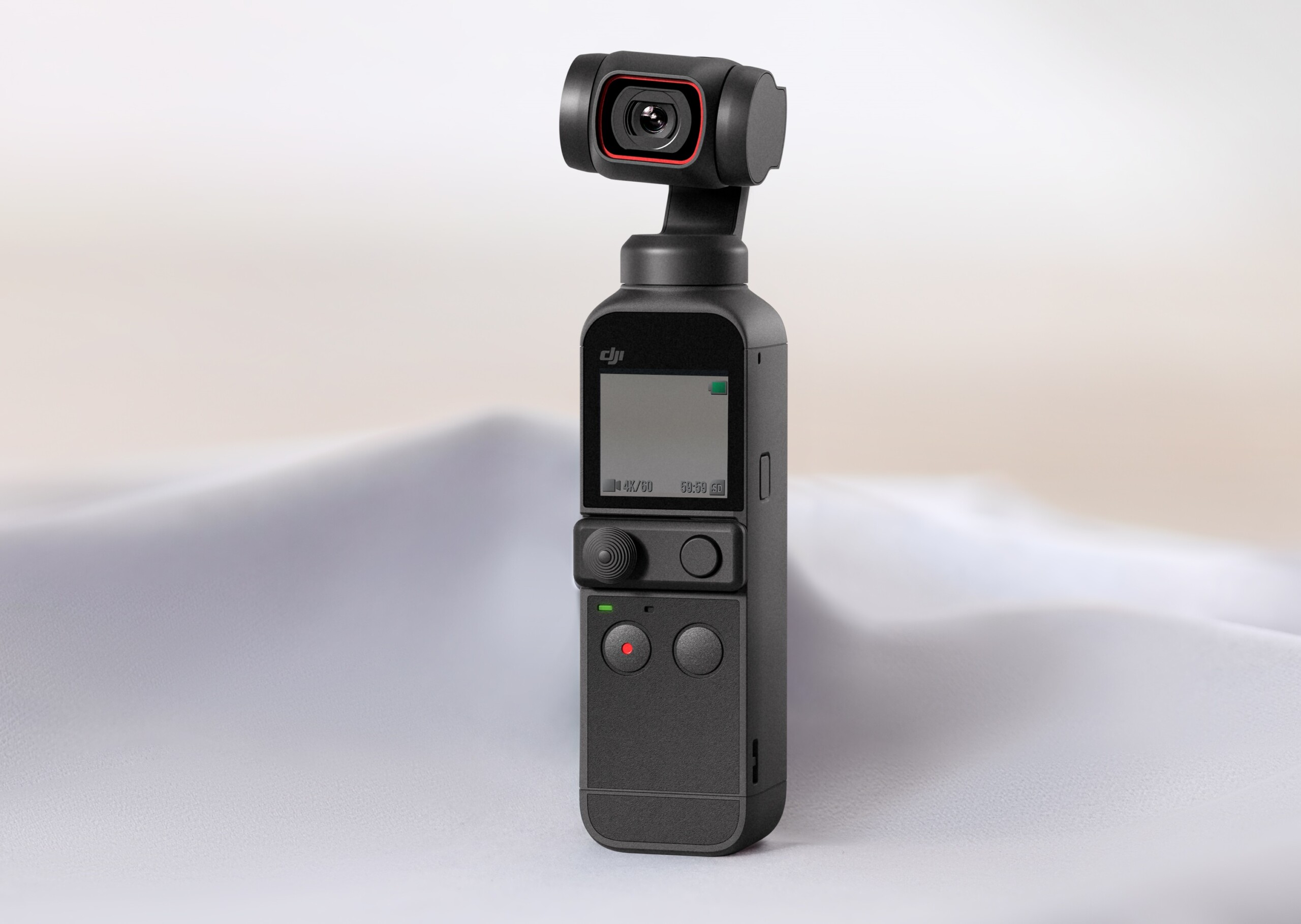

When you connect your smartphone to the Osmo Pocket using the swappable USB Type-C or Lightning connector (both included in the box), you get a much more easy-to-navigate interface through the DJI Mimo app. While it’s a little clunky to use, almost every major feature of the device is available through these gestures, which is a real treat. You use gestures to navigate through the gimbal’s different settings and features. On the front of the Osmo Pocket is a tiny, full-color touchscreen display, measuring one inch diagonally. As such, you’re essentially getting a high-quality drone cam on a pocket-sized gimbal.

We’re not certain yet, but we’re pretty sure the camera is the same as what’s included with the DJI Mavic 2 Zoom drone. On top of the Osmo Pocket is a 12MP, 1/2.3-inch CMOS sensor with a f/2.0 aperture capable of recording 4K video at a rate of 100Mbps.

In fact, you can utilize almost all the features of the Osmo Pocket without needing your smartphone on hand at all. The Osmo Pocket is similar, except you’re not using your smartphone’s camera lens. The Osmo Mobile line allows you to snap a smartphone onto the gimbal, connect the two devices wirelessly, and then get the smooth stabilization and tilt-and-pan techniques you need to create pro-quality video. You might be familiar with the DJI Osmo Mobile line of smartphone gimbals. If you’re in the market for a pocket sized gimbal catered to sharing life’s little moments on social media, the Pocket is for you.Like an Osmo Mobile gimbal…but better The DJI Osmo Pocket is available now for purchase through the DJI website and your favorite electronics dealer.
#Dji osmos pocket pro
Perhaps the most exciting feature in Pro Mode is the ability to take a handheld long exposure up to 3 seconds, while the gimbal acts like a tripod to stabilize the shot, making creative long exposures possible, like light painting under the stars.

In Pro Mode, you have more control over the camera’s exposure parameters enabling you to capture creative content according to your own vision in a multitude of light conditions from dawn to dusk. Capture a clip and choose from 10 different auto generated templates and DJI’s “Mimo” handles the camera movements and then generates a story for you. Story Mode is similar to GoPro’s Quick Stories, aimed at making sharing content directly to social media super easy and streamlined. While significantly less powerful than the Osmo Mobile 2, the Osmo Pocket still runs longer than any current GoPro, and in all honesty, over 2 hours of capturing, “Life's Daily Moments,” is probably more than enough. The more powerful Osmo Mobile 2, on the other hand, can run up to 15 hours off one battery, another selling point for prosumers. The Osmo Pocket also has an integrated 1.08-inch touchscreen built into the handle just below the gimbal so the user can scroll through different shooting modes without connecting their phone, making it a little more user friendly than the prosumer-aimed Osmo Mobile 2, which aside from sporting a larger camera and actually being larger, cannot function alone and must be connected to a mobile device running the DJI Go app.ĭJI claims the Osmo Pocket can record a continuous 120 minute 4k video on a single charge and has a quick one hour charge features that boosts the battery back up to 90% when using the Pocket as a stand alone device. The Pocket boasts the same 1/2.3-inch camera sensor as the original Mavic Pro, Mavic Air and Mavic 2 Zoom with the ability to capture 4k video at up to 60fps and take crisp 12MP stills. (Though, like its name implies, the Pocket does fit nicely into a pocket thanks to its foldable design).Īnd unlike the Hero7 black which is built to be waterproof out of the box, the Pocket isn’t, and you’ll need to buy an extra waterproof housing that at this time is still in the works, according to DJI. One advantage the Hero7 Black does have over the Osmo Pocket is its more action-oriented square form as compared to the Pocket’s fragile and elongated candy bar shaped gimbal camera that might not hold up strapped to a chest mount on a Mammoth powder day. That’s where the DJI Osmo Pocket comes in, provided you’re a vlogger or other semi pro production extraordinaire who needs that sort of buttery smooth image stabilization for their phone content.įor the average consumer shooting with their mobile device, however, another $350 on top of what was already spent might be a questionable investment, though that price tag is still under GoPro’s $400 for the Hero7 Black. While you may have spent a thousand bucks on your new smartphone, it probably doesn’t offer 3-axis gimbal stabilization.


 0 kommentar(er)
0 kommentar(er)
